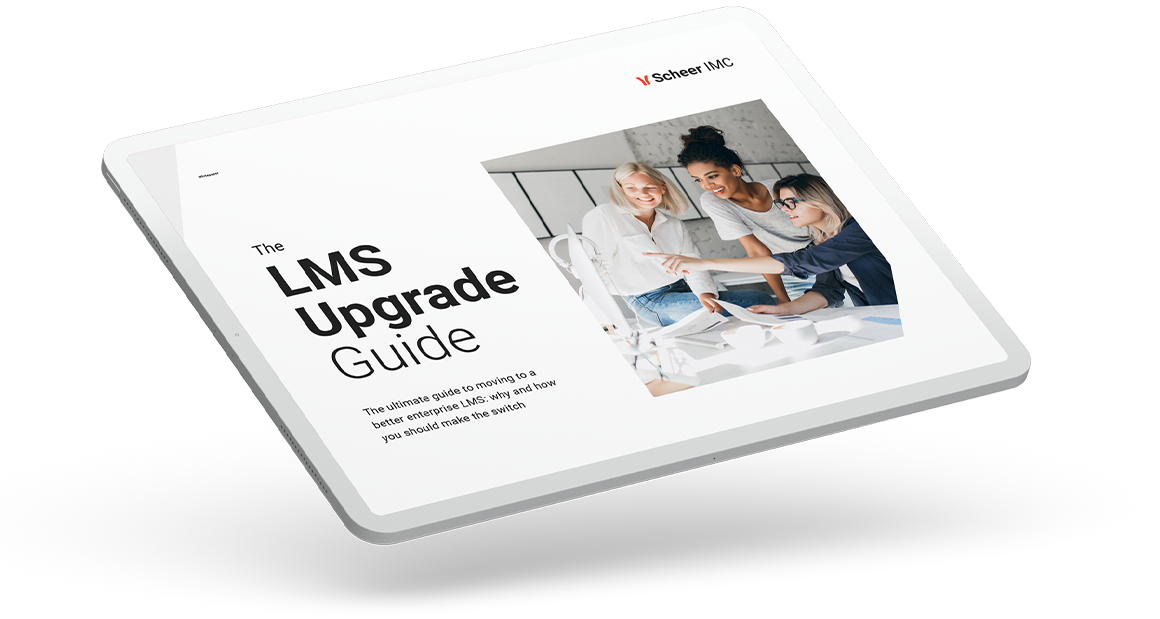
The 2025 LMS Upgrade Guide
Get your copy!
As a proven industry leader trusted by global enterprise, we’re passionate about learning – and so are our customers.




Used correctly, with proper planning and linked to job profiles, learning paths can be a valuable tool for long-term, targeted employee development. Some companies are already aware of the value of learning paths in their bid to overcome skills shortages. They systematically foster lifelong learning and are using them to good effect through their learning management systems (LMS).
This is possible because learning paths are core parts of commonly used learning platforms. Put simply, learning paths are used to map long-term training and professional development plans that span multiple courses. These courses can consist of a very wide range of learning content types, including online courses, face-to-face training, and even periods of blended learning. And often there are dependencies between the individual courses: the learner can’t book Course B until they have successfully completed Course A or met some other prerequisites.
Applying these sorts of rules regarding the logical order of learning steps gives rise to various learning concepts. For example, you can create open learning concepts with freely selectable module sequences so the learner can choose the order in which they progress through the modules. Alternatively, you can create closed scenarios in which the sequencing of modules is fixed.
Moreover – and this is where it gets interesting – you can set up these scenarios either as content-based or level-based learning paths. Interesting because this is the point where learning paths become true development paths.
Content-based learning paths are the classic solution and are found in most learning platforms. You can use them to provide and track structured learning content over longer time frames. Take, for example, a six-month onboarding programme in which the participants are required to complete a series of diverse courses.
In case a new hire is assigned to a certain group – say, Sales – in the LMS, they can automatically be signed up for the onboarding programme for that group (in this case “Sales”).
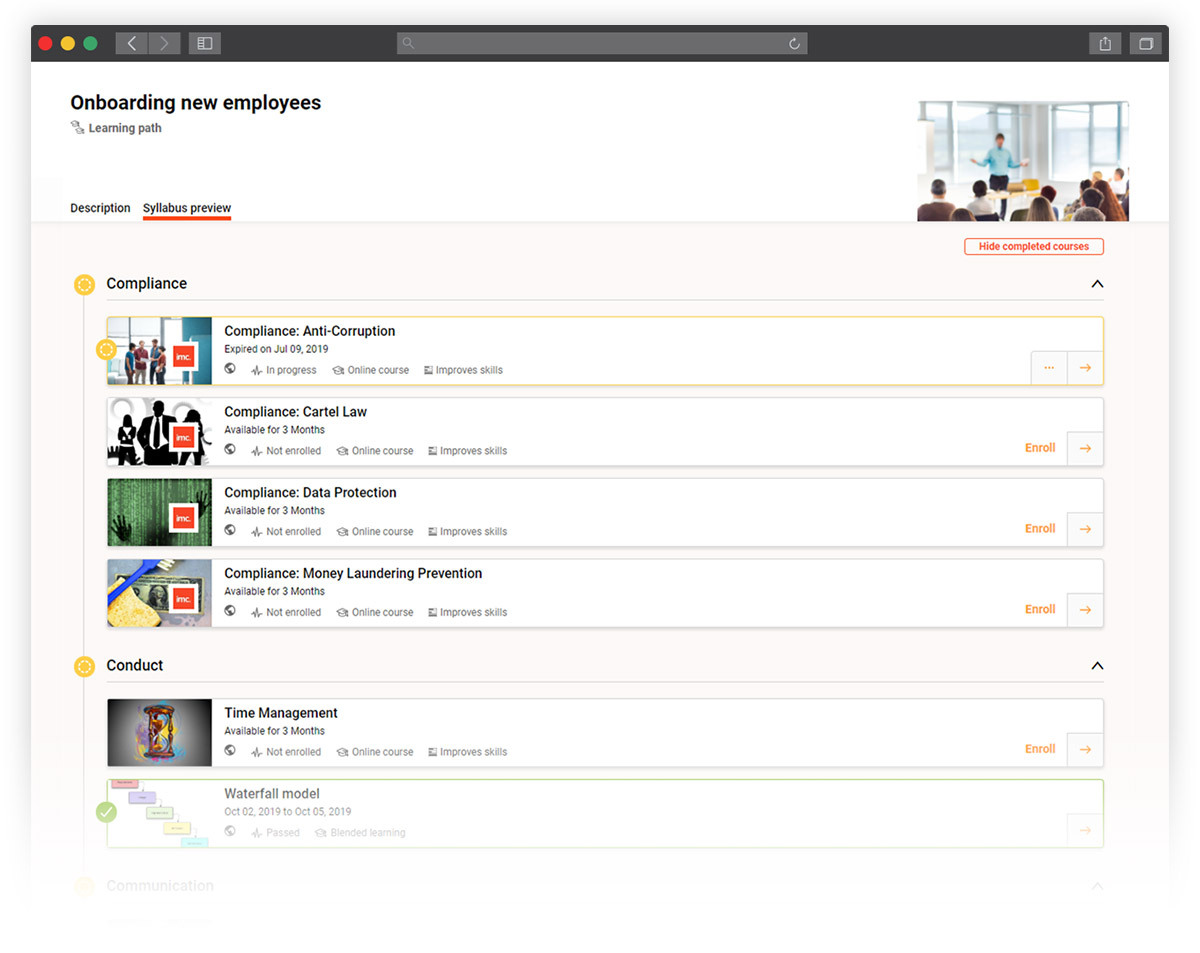
Depending on how the learning path is configured, the new employee is then required to take a test. Depending on the results, they are either allowed to proceed directly to certain modules or required to complete the entire learning path. The learner can in most cases work through the modules in any order they like and can book things like face-to-face training themselves.
In many cases, successful completion of the learning path is conditional on taking a test or passing an assessment interview. Once the learning path has been successfully completed, our learner automatically receives a certificate, which is automatically stored in the system.
Learning paths of this type are a relatively simple way of structuring learning content or courses and are standard in commonly used learning management systems.
Level-based learning paths resemble content-based ones at first glance but are more sophisticated and offer a lot more options. They consist of three levels, each building on the previous one, and are directly linked to the learner’s skill and role profiles.

This opens up a wealth of applications, as imc business consultant Tobias Sommer explains: “Daimler Global Training, with whom we co-created learning paths of this type, uses them in various scenarios, such as helping employees to meet the requirements of certain job profiles.
Other clients use level-based learning paths for recertification. Recertification means that an employee must regularly complete prescribed professional development courses within the learning path in order to maintain their status as a specialist in a certain area.
If the employee does not complete the level by the specified deadline, they lose their specialist status. But if they do complete it, they can use that as proof that they have undertaken the latest training – for a particular software, for example. In this way, Daimler is actively integrating lifelong learning into the everyday routines of its employees while at the same time undertaking ongoing quality assurance.”
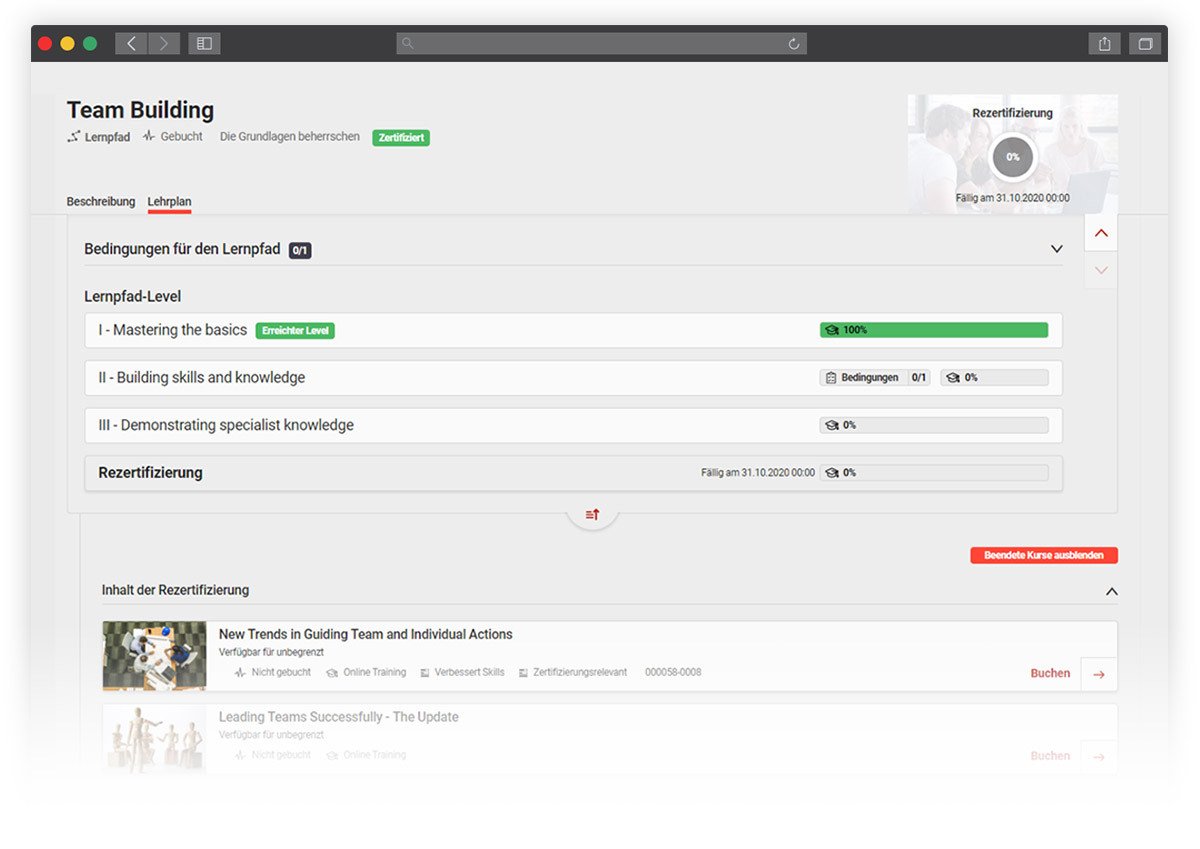
Other options for getting the most out of level-based learning paths include using them in conjunction with job advertisements, certificates, and clearances to access certain documents. In other words, certain prerequisites and access restrictions can be tied to pre-defined levels.
Take, for example, a learner who is in learning path two of three. Before the learner can graduate from their current learning path and hence gain access to sensitive documents, their supervisor must confirm in the system that they have acquired all the necessary knowledge. Only then, and after passing a final test, will the learner be authorised to access the documents in question. You can also take the same approach with job profiles: employees are blocked from seeing certain job advertisements until they have acquired the skills needed for the job in question.
Then there’s the certificate use case, as Sommer explains: “The system can also be set up to generate certificates automatically so that, on completion of learning requirements, learners automatically receive certificates which are then also automatically stored in their profiles. This saves time by eliminating manual up- and downloads and HR involvement. Learners can receive certificates on completion of the entire learning path or, in the case of level-based learning paths, on completion of each level as well.”
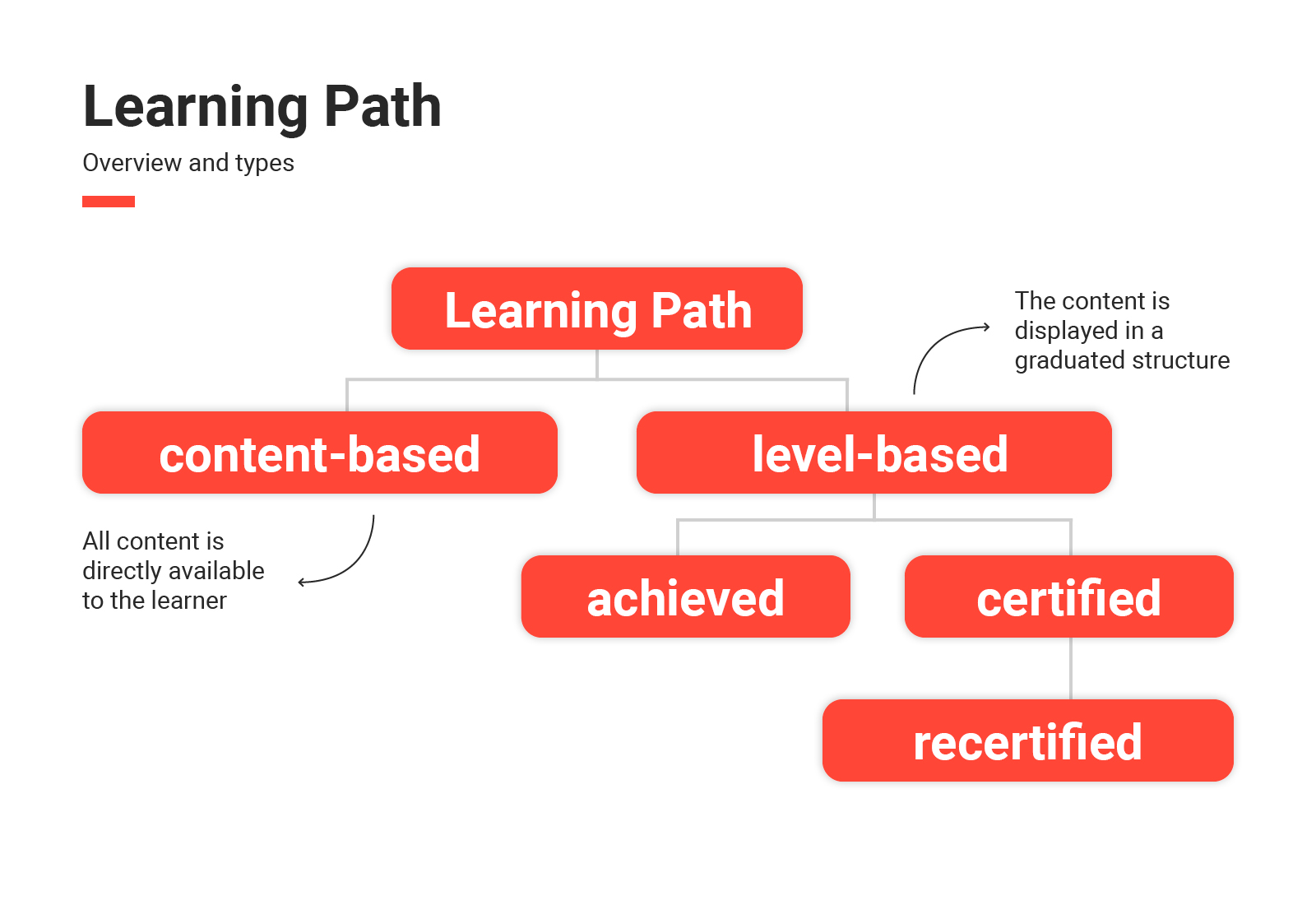
As we have seen, the potential of learning paths is immense. Tobias Sommer: “Used consistently, level-based learning paths are more like development paths that can be used to take professional development – or even the push to fill skills shortages – to a whole new level.
If I know exactly what qualifications my employees have and consistently provide professional development, I will have the agility, for example, to rapidly fill positions from within the company. I can simply look up which employees might be suitable based on their qualifications and save myself any unnecessary searching.
And that’s why I think this function still has enormous potential, and why I’d like to see more companies recognising that and taking advantage of it.”

If an LMS wrote a diary - what would it say?
We thought about that and share some tips for LMS professionals, told a little differently...

“Formal learning is like riding a bus. Informal learning is more like cycling.” We explain what this means and share some key facts and recomemndations
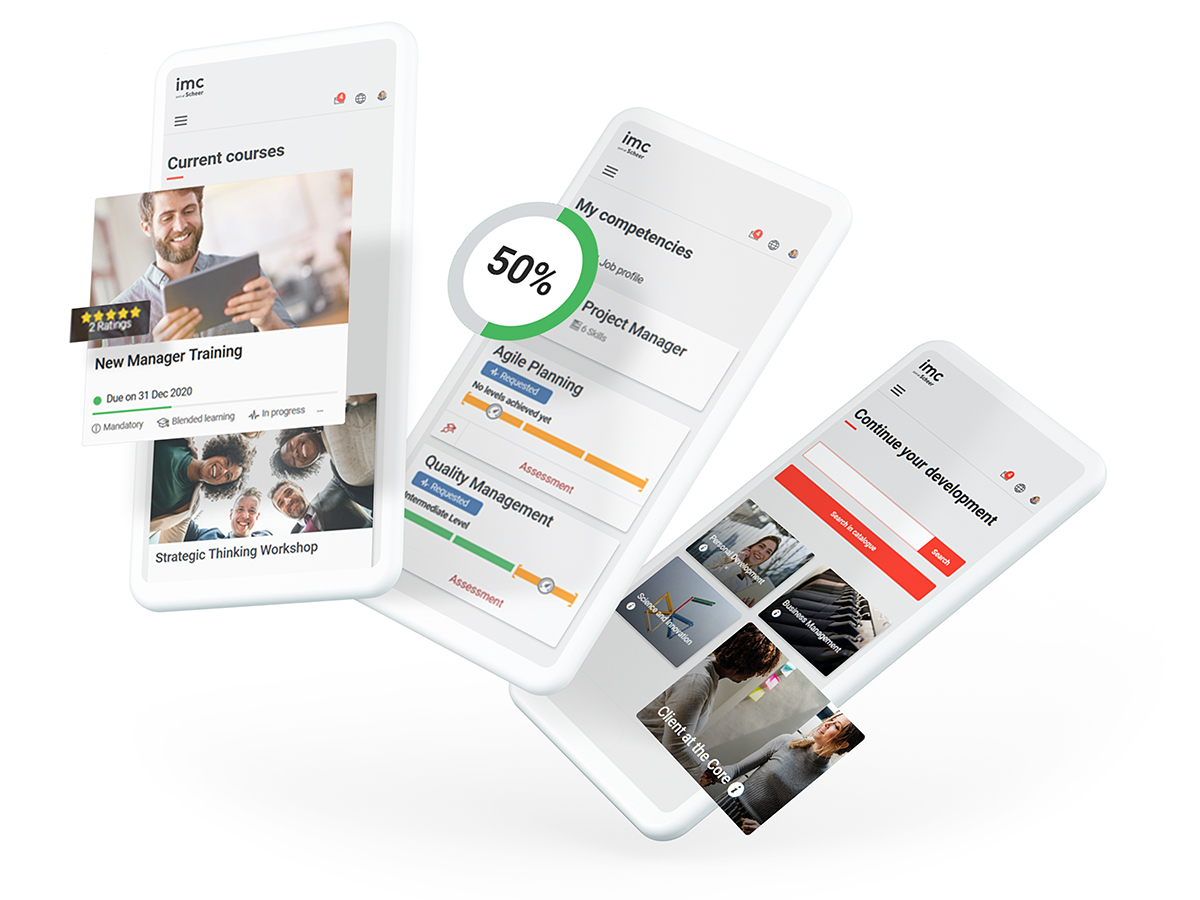
If you would like to learn more about imc's Learning Management, check here for more information.
